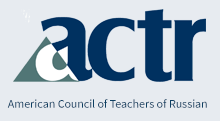Russian Language Journal
Keywords
methodology, literacy texts, foreign-language classrooms, learning
Abstract
In the last three and a half decades, a considerable number of publications in foreign-language methodology have addressed the use of literary texts (LTs) in foreign-language classrooms. While at the beginning of the twentieth century learning a foreign language still meant a close study of canonical LTs for linguistic and humanistic purposes following the grammar-translation method (Kramsch and Kramsch 2000; Iatsenko 2017b), by the middle of the century, literature was replaced by more functional models of learning (Carter 2007). The 1980s opened new perspectives on the didactic role of L2 literary reading, which are commonly associated with the confluence of ideas from two theoretical frameworks: reader-response theory and communicative language teaching (Gilroy and Parkinson 1997). The reader-response theory challenged formalist text-oriented positions, drawing attention to the reader’s active role in co-creating the text’s meaning. From a languagelearning standpoint, this approach revealed the potential of LTs to produce multiple interpretations and naturally lead to classroom discussions (ibid.). The communicative teaching method recognized the authenticity of LTs and their ability, if carefully selected, to provide not only topics of personal interest but also illustrations of language use and opportunities for language learners to develop vocabulary, reading skills, and critical thinking ability (Kramsch and Kramsch 2000, 567). This reassertion of the didactic benefits of literary reading in foreign-language classrooms led to new research and an increasing number of methodological proposals in the fields of both English as a Foreign Language (EFL) and Russian as a Foreign Language (RFL).
Recommended Citation
Yunusova, S. (2018). Defining the Accessibility of a Literary Text: Contemporary Russian Literature in a CEFR B2 Russian as a Foreign Language Classroom. Russian Language Journal, 68(1). https://doi.org/10.70163/0036-0252.1058

